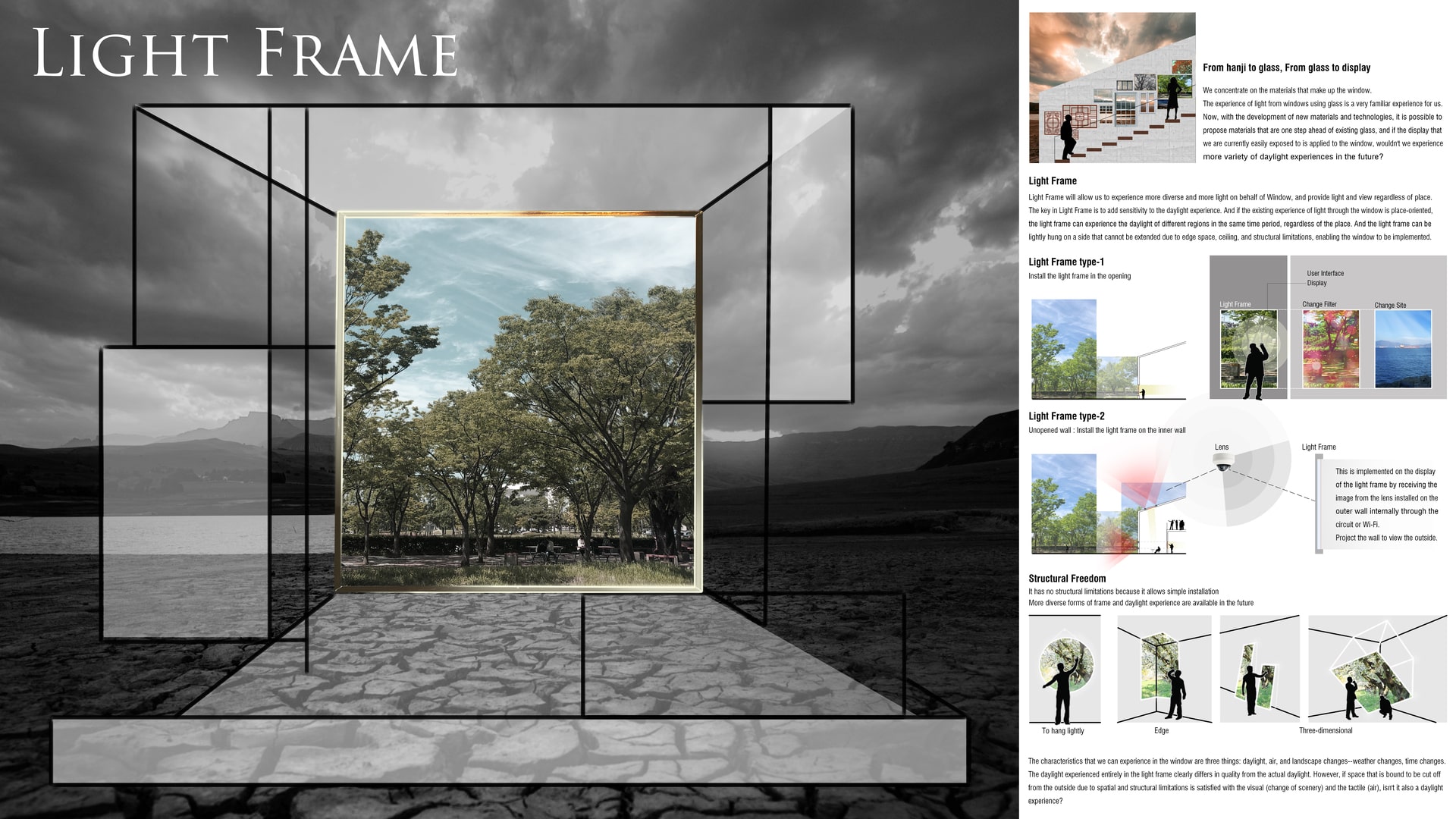Project Description
From Hanji to glass, from glass to display The development of technology creates various meanings in space and shows a new perspective on light. At first, there was Hanji(traditional Korean paper handmade from mulberry trees) as a way to experience daylight in our country. Hanji played a role in preventing wind and cold, and indirectly bringing light into the interior. However, with these windows closed, direct visual communication with the outside world was difficult. Since the 1700s, plate glass has been introduced in Korea due to the development of transparent plate glass making technology to fill openings that can bring in a lot of sunlight. The introduction of plate glass in windows has created opportunities for direct experience of a larger amount of daylight, and it has become possible to have a "confidentiality" that blocks the climate with the outside that the original window originally had, and a "view" that allows visual communication with the outside. The use of such glass has continued the development of windows from plate glass filled with small openings to curtain walls. We focus here on the materials that make up the windows. The experience of light from windows using glass is a very familiar experience for us. Now, with the development of new materials and technologies, it is possible to propose materials that are one step ahead of existing glass, and if the display that we are currently easily exposed to is applied to the window, wouldn't we experience more variety of daylight experiences in the future? Light Frame I think windows are the means we crave internally and externally the most. Light Frame will allow us to experience more diverse and more light on behalf of Window, and provide light and view regardless of place. The combination of glass and display in existing windows allows a richer appreciation of the daylight through the opening. Also, flexible frames allow light frames to be freely installed regardless of structure. The key in Light Frame is to add sensitivity to the daylight experience. And if the existing experience of light through the window is place-oriented, the light frame can experience the daylight of different regions in the same time period, regardless of the place. And the light frame can be lightly hung on a side that cannot be extended due to edge space, ceiling, and structural limitations, enabling the window to be implemented. Two Types of Light Frame Proposal The first type is to install the light frame in an opening facing the open air. Users edit the type of daylight experience directly by using the user interface of the display on top of daylight and views that flow directly from the outside. Situation 1: It's raining I feel depressed today. I want to see a clear sky. The user finds and selects a city in the clear sky. Experience the sunshine of the clear sky with the sound of rain that comes quietly. Situation 2: Daytime I sat on the sofa in front of the window with my loved one. I want to listen to emotional songs together and see the beautiful sunset. The user finds and selects a city ahead of time. Along with the song, you experience the sunset, which is turning red and yellow in the sky. Sunlight is added to the user's desired sensibility(view). The second type is to install the light frame in a space on an inner wall that is not accessible from the outside. This light frame is implemented in the display of the light frame by receiving the image from the lens installed on the outer wall internally through the circuit. It's like experiencing sunlight while looking out through a blocked wall. This means that it extends outward through the window. This daylight experience takes place with the advent of modern poetry, and includes all dynamic movements, including external influences, light and wind. The light frame can be installed without limitation of space, such as walls, ceilings, corners, and floors, through flexible frames. It can be installed at the corners of the ceiling and walls to show the sky, or simply to place a frame on the wall. As there are no structural limitations, light frames will exist wherever users want, in any shape, and can also show anything they see over the window. Three characteristics that we can experience in the window are daylight, air, and landscape changes (weather, time change). The daylight experienced entirely in the light frame clearly differs in quality from the actual daylight. However, if space that is bound to be cut off from the outside due to its spatial and structural limitations is met with vision (change of scenery) and tactile (air), isn't it also a daylight experience?
